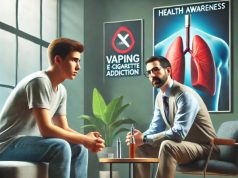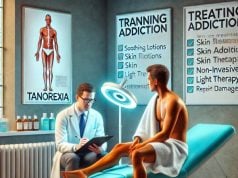
Aerosol addiction, a subset of inhalant use disorders, is an often-overlooked but devastating problem, especially among adolescents and young adults. Products like spray paints, deodorants, air fresheners, and other pressurized substances are misused for their psychoactive effects, leading to severe health consequences and rapid dependency. As our understanding of this addiction evolves, 2025 brings advanced treatment strategies and technological innovations that offer new hope for those seeking recovery. This comprehensive guide delivers authoritative, empathetic information on aerosol addiction—covering causes, proven therapies, clinical outcomes, and practical advice to empower individuals and families on the path to healing.
Table of Contents
- Understanding Aerosol Dependency: Causes, Patterns, and Scope
- Traditional and Emerging Methods for Treating Aerosol Addiction
- Breakthrough Technologies and Innovative Recovery Tools
- Clinical Results and Assessment of Outcomes
- Frequently Asked Questions
Understanding Aerosol Dependency: Causes, Patterns, and Scope
Defining Aerosol Addiction
Aerosol addiction refers to compulsive misuse of aerosolized products, typically inhaled for their mind-altering effects. Classified as inhalant use disorder in the DSM-5, this condition is recognized by persistent use despite harm, unsuccessful attempts to quit, and the prioritization of inhalant use over other activities.
DSM-5 Criteria Highlights
- Recurrent use of aerosols, often in larger amounts or longer than intended
- Cravings and repeated failed attempts to cut down
- Significant time spent obtaining, using, or recovering from inhalant effects
- Interference with daily responsibilities and relationships
- Continued use despite health or social problems
- Tolerance (needing more to achieve the same effect) and withdrawal symptoms
Prevalence and At-Risk Populations
- Aerosol abuse peaks in early adolescence but can persist into adulthood.
- Global surveys estimate that 3–5% of youth have tried aerosols; a significant subset develop dependency.
- Higher risk in communities with high product availability, limited supervision, and social disadvantage.
Causes and Contributing Factors
Biological Factors
- Genetics and family history of substance use disorders increase risk.
- Adolescents’ developing brains are especially vulnerable to addiction pathways triggered by aerosols.
Environmental and Social Influences
- Easy access to household products
- Peer pressure and imitation
- Lack of recreational alternatives
- History of trauma or neglect
Psychological Triggers
- Coping with anxiety, depression, or boredom
- Seeking euphoria, dissociation, or “escape” from stressors
Health Consequences of Aerosol Addiction
Short-Term Dangers
- Sudden sniffing death syndrome due to cardiac arrhythmia
- Accidents, injuries, or risky behaviors while intoxicated
- Severe intoxication, coma, or respiratory depression
Long-Term Effects
- Permanent brain and nerve damage
- Cognitive impairment and memory loss
- Liver, kidney, and lung damage
- Psychiatric symptoms: depression, paranoia, hallucinations
Social and Economic Impacts
- Academic failure and truancy
- Family conflicts and breakdown
- Legal issues stemming from theft or public intoxication
- Increased healthcare and societal costs
Practical Advice:
Early detection is crucial. Parents, educators, and peers should watch for empty cans, strong chemical odors, stained clothing, and unexplained behavior changes. Open conversations and prompt support can help prevent escalation.
Traditional and Emerging Methods for Treating Aerosol Addiction
Comprehensive Assessment and Individualized Planning
Successful treatment begins with a holistic assessment—reviewing substance use history, mental health status, physical health, family dynamics, and environmental factors.
Behavioral Interventions
1. Cognitive Behavioral Therapy (CBT)
- The gold standard for treating inhalant and aerosol addiction.
- Helps individuals identify triggers, develop coping strategies, and prevent relapse.
- Tailored for age, culture, and individual needs.
2. Motivational Interviewing (MI)
- Strengthens the motivation to change through nonjudgmental dialogue.
- Particularly effective for youth and those ambivalent about quitting.
3. Family-Based Therapy
- Involves parents and caregivers in the recovery process.
- Focuses on communication, boundary setting, and rebuilding trust.
4. Contingency Management
- Offers incentives or rewards for clean drug tests and positive behaviors.
- Increases treatment retention and success rates.
5. Group Counseling and Peer Support
- Provides mutual encouragement, social skills training, and relapse prevention.
Medical and Psychiatric Support
- While no medications are approved specifically for aerosol addiction, underlying mental health issues (e.g., depression, anxiety) are treated with appropriate pharmacotherapy.
- Medical care for acute intoxication, withdrawal symptoms, and organ damage is essential.
Emerging Approaches
- Trauma-informed therapies for those with adverse childhood experiences
- Art, music, and experiential therapies to promote self-expression and healing
- School- and community-based interventions to address risk environments
Harm Reduction and Relapse Prevention
- Education about risks and safe alternatives
- Creating safe, supportive environments to reduce triggers
- Regular follow-up and aftercare planning
Practical Advice:
Seek programs that provide integrated, multidisciplinary care. If standard treatments aren’t effective, ask about new or experimental therapies, and never hesitate to involve family and community resources.
Breakthrough Technologies and Innovative Recovery Tools
Digital Therapeutics and Telehealth
- Mobile apps: Personalized recovery plans, daily check-ins, and tracking of cravings or triggers.
- Online counseling and group sessions: Increase access for those in remote or underserved communities.
- Telehealth: Connects individuals with addiction specialists, mental health providers, and medical care without geographical barriers.
Wearables and Remote Monitoring
- Smart wristbands: Track sleep, heart rate, and stress—offering early alerts for relapse risk.
- Smart home devices: Monitor air quality and send reminders to avoid high-risk environments.
Virtual Reality and Simulation Therapy
- VR therapy: Exposes users to triggers in a controlled, therapeutic environment to practice coping skills and build resilience.
AI and Predictive Analytics
- AI-powered chatbots: Offer 24/7 support, motivational messages, and crisis management.
- Predictive algorithms: Identify periods of high relapse risk and deliver targeted interventions.
Community Platforms and Peer Networks
- Online recovery communities and peer support forums provide a sense of belonging, mentorship, and accountability.
Integrated Treatment Models
- Hybrid models combine in-person and digital care, ensuring continuity, accessibility, and support across all stages of recovery.
Practical Advice:
Leverage digital tools as part of a broader recovery plan, not as a standalone solution. Ensure that technology supplements, not replaces, personal and clinical connections.
Clinical Results and Assessment of Outcomes
Evidence Base for Aerosol Addiction Treatment
- CBT, MI, and family therapy consistently demonstrate positive outcomes in clinical trials for inhalant disorders.
- Contingency management increases engagement and completion rates.
- Digital tools and telehealth interventions, especially post-pandemic, are showing promise in improving long-term success.
Success Metrics
What Does Progress Look Like?
- Reduced or stopped aerosol use
- Improved academic and work performance
- Better mental and physical health
- Enhanced relationships and family stability
Patient-Reported Outcomes
- Self-rated cravings, quality of life, and satisfaction with treatment
- Reduced anxiety, depression, and improved coping skills
Clinical and Biological Markers
- Clean urine drug screens
- Monitoring for cognitive recovery and physical health improvements
Relapse Prevention
- Ongoing support groups, counseling, and digital monitoring lower relapse risk.
- Early re-engagement after relapse is crucial to long-term recovery.
Practical Advice:
Recovery is a process. Set achievable goals, celebrate progress, and maintain regular communication with your care team. Remember: setbacks are part of the journey, not the end.
Frequently Asked Questions
What are the main signs of aerosol addiction?
Watch for chemical odors, empty cans, stained clothing, mood swings, withdrawal from activities, and declining performance at school or work.
How dangerous is aerosol abuse compared to other substances?
Aerosol misuse is extremely dangerous and can cause sudden death, brain damage, and organ failure even after a single use. Long-term effects are often irreversible.
What are the best treatments for aerosol addiction in 2025?
CBT, family therapy, motivational interviewing, and contingency management are most effective. Digital and hybrid care models enhance access and success.
Are there medications that help with aerosol addiction?
No specific medications treat aerosol addiction, but co-occurring mental health issues (like anxiety or depression) may benefit from appropriate prescription therapy.
Can technology support recovery from aerosol addiction?
Absolutely—telehealth, apps, wearables, and online support groups are vital tools that boost engagement, monitor progress, and provide 24/7 assistance.
Is relapse common in aerosol addiction recovery?
Relapse is possible but not inevitable. With strong support, regular follow-up, and flexible care, many people achieve long-term recovery after setbacks.
What should families do if a loved one is struggling with aerosol addiction?
Approach with compassion, seek professional guidance, encourage therapy, and avoid blame. Family involvement in treatment is linked to better outcomes.
Disclaimer:
This article is for educational purposes only and is not a substitute for professional medical advice. For diagnosis or treatment, always consult a qualified healthcare provider.
If this article helped you, please consider sharing it on Facebook, X (Twitter), or your favorite social network. Your support allows us to keep providing quality, evidence-based resources!










